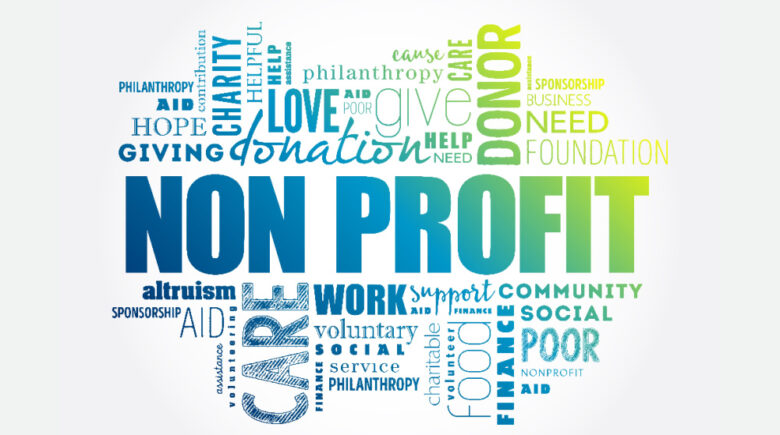Table of Contents
Non-profit grants serve as vital lifelines for charitable organizations seeking to advance their missions, support community initiatives, and drive sustainable impact. Unlike loans, grants do not require repayment, making them highly competitive yet transformative sources of funding. Whether originating from federal agencies, private foundations, corporations, or community trusts, these grants can underwrite program costs, operational expenses, capital projects, research, and more.
By tapping into a diverse array of grant opportunities, non-profit leaders can secure the resources needed to expand services, innovate solutions, and strengthen organizational capacity. This article provides a comprehensive guide to navigating the world of non-profit grants, from understanding types and sources to crafting winning proposals and building long-term relationships with funders.
Understanding Non-Profit Grant Types
Non-profit grants generally fall into four main categories, each with its own characteristics and application channels:
Federal Grants
Issued by U.S. government agencies, federal grants support broad public objectives—health research, education, community development, environmental protection, and more. These opportunities are listed on Grants.gov, which aggregates thousands of funding announcements from agencies such as the National Institutes of Health (NIH) and the Department of Education grants.gov.
State and Local Grants
State, county, and municipal governments offer grants targeting region-specific needs—workforce development, housing initiatives, arts programming, and small business support. While some are featured on Grants.gov, many appear on individual state agency websites or community foundations’ portals grants.gov.
Foundation Grants
Private and family foundations—including supporting organizations such as the Ford Foundation or community foundations—provide both unrestricted operating support and project-specific funding. Candid’s Foundation Directory Online maintains profiles on over 140,000 U.S. grantmakers, helping nonprofits pinpoint funders aligned with their mission candid.orgfconline.foundationcenter.org.
Corporate Grants
Corporations and corporate foundations allocate funds through corporate social responsibility (CSR) programs, matching gift initiatives, or specific requests for proposals (RFPs). These grants often emphasize community engagement, workforce training, and sustainability projects.
Understanding these distinctions enables nonprofits to tailor their research and strategy, ensuring alignment with each funder’s priorities and application procedures.
Identifying Funding Opportunities
Effective grant-seeking begins with targeted research and the use of specialized databases:
Grants.gov
The centralized federal portal lists thousands of active funding opportunities, searchable by agency, category, eligibility, and deadline. It also provides foundational resources such as “Grants 101” to demystify terminology and processes grants.govgrants.gov.
Foundation Directory Online (FDO)
Managed by Candid, FDO offers both free and subscription tiers, delivering rich data on more than 250,000 grantmakers, including detailed profiles, giving history, and RFP listings. The FDO Quick Start tool provides a user-friendly entry point for novices candid.orgfconline.foundationcenter.org.
OpenGrants.io
A rapidly growing platform that aggregates grant opportunities across federal, state, corporate, and foundation sources. OpenGrants’ curated lists and AI-driven matching help nonprofits uncover relevant grants they might otherwise overlook opengrants.io.
Philanthropy News Digest (PND)
A free service of Candid, PND publishes a weekly roundup of newly posted RFPs, enabling organizations to stay abreast of emerging opportunities without relying solely on foundation websites learning.candid.org.
Combining these resources with direct outreach to local funders—community foundations, civic groups, and corporate CSR managers—maximizes the breadth of opportunities under consideration.
Eligibility and Application Essentials
Most grant applications begin with a rigorous eligibility check. Key considerations include:
Non-Profit Status
Federal and most private foundations require 501(c)(3) designation or an equivalent fiscal sponsorship arrangement. Organizations lacking exempt status may partner with a qualified sponsor to apply help.candid.org.
Applicant Profile
Grants.gov’s Applicant Eligibility resource outlines requirements by agency and program, clarifying whether organizations, institutions, tribes, or collaborations qualify. Individual applicants are typically ineligible for organizational grants, emphasizing the importance of understanding applicant categories grants.gov.
Geographic and Thematic Alignment
Many funders specify geographic coverage and thematic focus—education, health, environmental conservation, arts, or economic development. Matching organizational mission and geographic scope to funder priorities is essential to avoid wasted effort.
Completing mandatory registrations—such as obtaining a DUNS number, registering in the System for Award Management (SAM), and setting up a Grants.gov Workspace—is often time-consuming. Early initiation of these steps can prevent last-minute hassles and ensure timely submissions.
Crafting a Compelling Grant Proposal
The heart of any successful grant application is a well-structured, persuasive proposal. Key components include:
Executive Summary
A concise overview of the project’s goals, outcomes, budget, and organizational capacity. This snapshot guides reviewers and frames the narrative.
Statement of Need
Clearly articulate the problem or opportunity the project addresses, supported by data, community input, and stakeholder perspectives. Establish urgency and relevance.
Project Design and Methodology
Outline goals, objectives, activities, timelines, and responsible parties. Incorporate evidence-based practices, pilot data, or case studies to demonstrate feasibility and innovation.
Budget and Justification
Provide a detailed budget, including line-item costs, matching fund sources, in-kind contributions, and clear justifications. Transparency and realism build reviewer confidence.
Evaluation Plan
Describe measurable performance indicators, data collection methods, and reporting schedules. Demonstrating accountability and a focus on outcomes distinguishes strong proposals.
Organizational Capacity
Highlight staff expertise, past accomplishments, governance structures, and fiscal health. Demonstrating readiness and stability reassures funders of your ability to execute the project.
While less than 1% of foundations publish formal RFPs, combining RFP-driven proposals with tailored letters of inquiry or concept papers expands reach. Customizing each application to reflect funders’ unique language and strategic priorities increases resonance and impact learning.candid.orgopengrants.io.
Maximizing Grant Success and Sustainability
Securing a grant is only the first step; sustaining and expanding funding requires proactive stewardship:
Cultivate Relationships
Engage funders through regular updates, site visits, and invitations to events. Building personal rapport fosters trust and can lead to multi-year or increased support.
Deliver on Promises
Meet project milestones, submit timely reports, and transparently address challenges. Demonstrating fiscal responsibility and adaptability enhances credibility.
Leverage Grants Strategically
Use seed funding to pilot innovations, then showcase success metrics to attract larger grants or diversified funding streams. Align grant outcomes with broader organizational strategic plans.
Seek Unrestricted Support
While many grants are project-specific, unrestricted operating grants empower organizations to allocate funds where most needed—staff capacity, infrastructure, or emerging needs.
Document Impact
Develop compelling case studies, testimonials, and data visualizations to illustrate outcomes. Sharing success stories across annual reports, social media, and stakeholder briefings amplifies impact and attracts future funders.
By prioritizing both programmatic excellence and stakeholder engagement, nonprofits can transform one-time grants into long-term partnerships, driving sustained progress toward their missions.
Securing non-profit grants demands a blend of strategic research, meticulous preparation, and authentic relationship-building. By leveraging comprehensive databases, adhering to eligibility requirements, and crafting data-driven proposals, charitable organizations can unlock vital resources to fuel their work. Coupled with diligent grant management and impactful storytelling, these efforts lay the foundation for renewed funding, organizational growth, and amplified community benefit.
References:
- Grants 101: A Short Summary of Federal Grants: grants.gov
- Grant Programs and Lifecycles: grants.govgrants.gov
- Find Grants for Nonprofits, Candid (Foundation Directory Online) candid.orgfconline.foundationcenter.org
Table of Contents
Non-profit grants serve as vital lifelines for charitable organizations seeking to advance their missions, support community initiatives, and drive sustainable impact. Unlike loans, grants do not require repayment, making them highly competitive yet transformative sources of funding. Whether originating from federal agencies, private foundations, corporations, or community trusts, these grants can underwrite program costs, operational expenses, capital projects, research, and more.
By tapping into a diverse array of grant opportunities, non-profit leaders can secure the resources needed to expand services, innovate solutions, and strengthen organizational capacity. This article provides a comprehensive guide to navigating the world of non-profit grants, from understanding types and sources to crafting winning proposals and building long-term relationships with funders.
Understanding Non-Profit Grant Types
Non-profit grants generally fall into four main categories, each with its own characteristics and application channels:
Federal Grants
Issued by U.S. government agencies, federal grants support broad public objectives—health research, education, community development, environmental protection, and more. These opportunities are listed on Grants.gov, which aggregates thousands of funding announcements from agencies such as the National Institutes of Health (NIH) and the Department of Education grants.gov.
State and Local Grants
State, county, and municipal governments offer grants targeting region-specific needs—workforce development, housing initiatives, arts programming, and small business support. While some are featured on Grants.gov, many appear on individual state agency websites or community foundations’ portals grants.gov.
Foundation Grants
Private and family foundations—including supporting organizations such as the Ford Foundation or community foundations—provide both unrestricted operating support and project-specific funding. Candid’s Foundation Directory Online maintains profiles on over 140,000 U.S. grantmakers, helping nonprofits pinpoint funders aligned with their mission candid.orgfconline.foundationcenter.org.
Corporate Grants
Corporations and corporate foundations allocate funds through corporate social responsibility (CSR) programs, matching gift initiatives, or specific requests for proposals (RFPs). These grants often emphasize community engagement, workforce training, and sustainability projects.
Understanding these distinctions enables nonprofits to tailor their research and strategy, ensuring alignment with each funder’s priorities and application procedures.
Identifying Funding Opportunities
Effective grant-seeking begins with targeted research and the use of specialized databases:
Grants.gov
The centralized federal portal lists thousands of active funding opportunities, searchable by agency, category, eligibility, and deadline. It also provides foundational resources such as “Grants 101” to demystify terminology and processes grants.govgrants.gov.
Foundation Directory Online (FDO)
Managed by Candid, FDO offers both free and subscription tiers, delivering rich data on more than 250,000 grantmakers, including detailed profiles, giving history, and RFP listings. The FDO Quick Start tool provides a user-friendly entry point for novices candid.orgfconline.foundationcenter.org.
OpenGrants.io
A rapidly growing platform that aggregates grant opportunities across federal, state, corporate, and foundation sources. OpenGrants’ curated lists and AI-driven matching help nonprofits uncover relevant grants they might otherwise overlook opengrants.io.
Philanthropy News Digest (PND)
A free service of Candid, PND publishes a weekly roundup of newly posted RFPs, enabling organizations to stay abreast of emerging opportunities without relying solely on foundation websites learning.candid.org.
Combining these resources with direct outreach to local funders—community foundations, civic groups, and corporate CSR managers—maximizes the breadth of opportunities under consideration.
Eligibility and Application Essentials
Most grant applications begin with a rigorous eligibility check. Key considerations include:
Non-Profit Status
Federal and most private foundations require 501(c)(3) designation or an equivalent fiscal sponsorship arrangement. Organizations lacking exempt status may partner with a qualified sponsor to apply help.candid.org.
Applicant Profile
Grants.gov’s Applicant Eligibility resource outlines requirements by agency and program, clarifying whether organizations, institutions, tribes, or collaborations qualify. Individual applicants are typically ineligible for organizational grants, emphasizing the importance of understanding applicant categories grants.gov.
Geographic and Thematic Alignment
Many funders specify geographic coverage and thematic focus—education, health, environmental conservation, arts, or economic development. Matching organizational mission and geographic scope to funder priorities is essential to avoid wasted effort.
Completing mandatory registrations—such as obtaining a DUNS number, registering in the System for Award Management (SAM), and setting up a Grants.gov Workspace—is often time-consuming. Early initiation of these steps can prevent last-minute hassles and ensure timely submissions.
Crafting a Compelling Grant Proposal
The heart of any successful grant application is a well-structured, persuasive proposal. Key components include:
Executive Summary
A concise overview of the project’s goals, outcomes, budget, and organizational capacity. This snapshot guides reviewers and frames the narrative.
Statement of Need
Clearly articulate the problem or opportunity the project addresses, supported by data, community input, and stakeholder perspectives. Establish urgency and relevance.
Project Design and Methodology
Outline goals, objectives, activities, timelines, and responsible parties. Incorporate evidence-based practices, pilot data, or case studies to demonstrate feasibility and innovation.
Budget and Justification
Provide a detailed budget, including line-item costs, matching fund sources, in-kind contributions, and clear justifications. Transparency and realism build reviewer confidence.
Evaluation Plan
Describe measurable performance indicators, data collection methods, and reporting schedules. Demonstrating accountability and a focus on outcomes distinguishes strong proposals.
Organizational Capacity
Highlight staff expertise, past accomplishments, governance structures, and fiscal health. Demonstrating readiness and stability reassures funders of your ability to execute the project.
While less than 1% of foundations publish formal RFPs, combining RFP-driven proposals with tailored letters of inquiry or concept papers expands reach. Customizing each application to reflect funders’ unique language and strategic priorities increases resonance and impact learning.candid.orgopengrants.io.
Maximizing Grant Success and Sustainability
Securing a grant is only the first step; sustaining and expanding funding requires proactive stewardship:
Cultivate Relationships
Engage funders through regular updates, site visits, and invitations to events. Building personal rapport fosters trust and can lead to multi-year or increased support.
Deliver on Promises
Meet project milestones, submit timely reports, and transparently address challenges. Demonstrating fiscal responsibility and adaptability enhances credibility.
Leverage Grants Strategically
Use seed funding to pilot innovations, then showcase success metrics to attract larger grants or diversified funding streams. Align grant outcomes with broader organizational strategic plans.
Seek Unrestricted Support
While many grants are project-specific, unrestricted operating grants empower organizations to allocate funds where most needed—staff capacity, infrastructure, or emerging needs.
Document Impact
Develop compelling case studies, testimonials, and data visualizations to illustrate outcomes. Sharing success stories across annual reports, social media, and stakeholder briefings amplifies impact and attracts future funders.
By prioritizing both programmatic excellence and stakeholder engagement, nonprofits can transform one-time grants into long-term partnerships, driving sustained progress toward their missions.
Securing non-profit grants demands a blend of strategic research, meticulous preparation, and authentic relationship-building. By leveraging comprehensive databases, adhering to eligibility requirements, and crafting data-driven proposals, charitable organizations can unlock vital resources to fuel their work. Coupled with diligent grant management and impactful storytelling, these efforts lay the foundation for renewed funding, organizational growth, and amplified community benefit.
References:
- Grants 101: A Short Summary of Federal Grants: grants.gov
- Grant Programs and Lifecycles: grants.govgrants.gov
- Find Grants for Nonprofits, Candid (Foundation Directory Online) candid.orgfconline.foundationcenter.org







